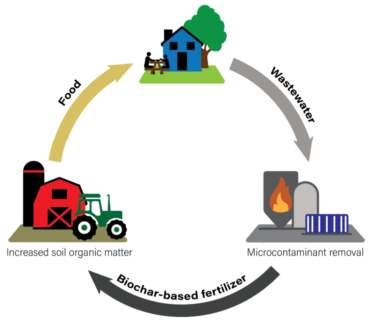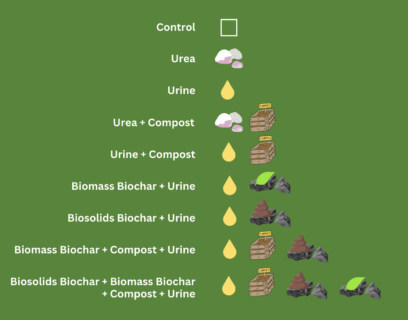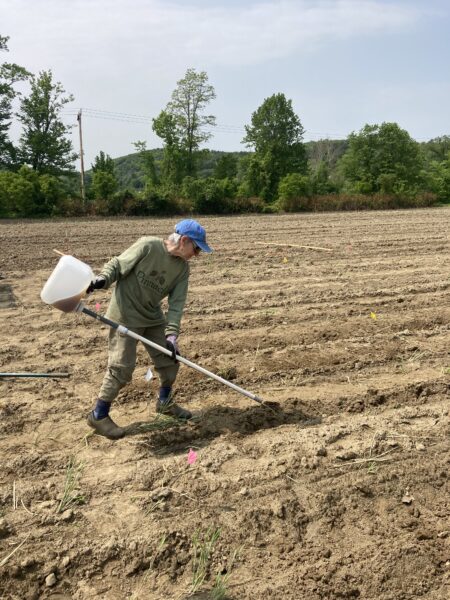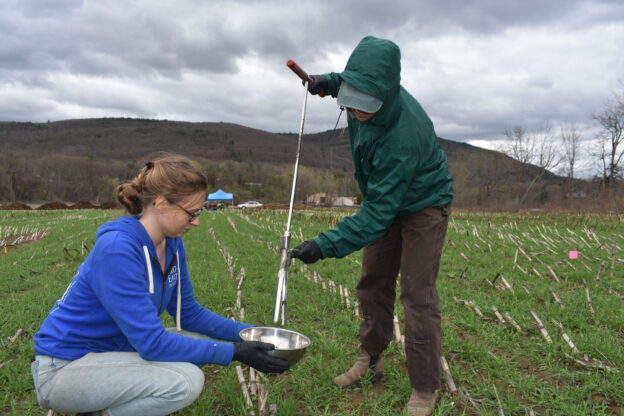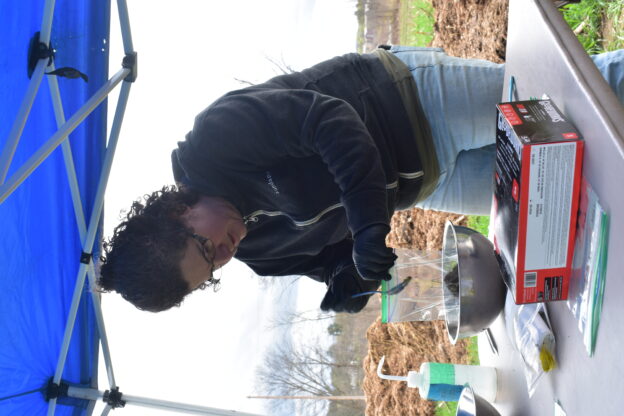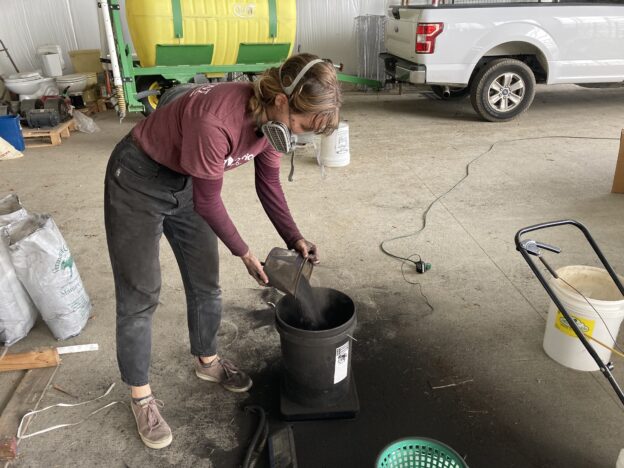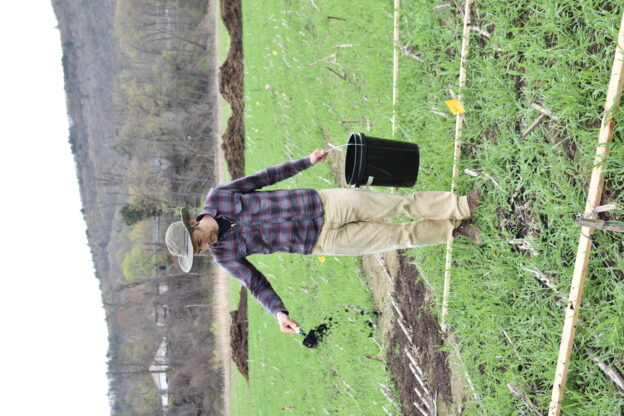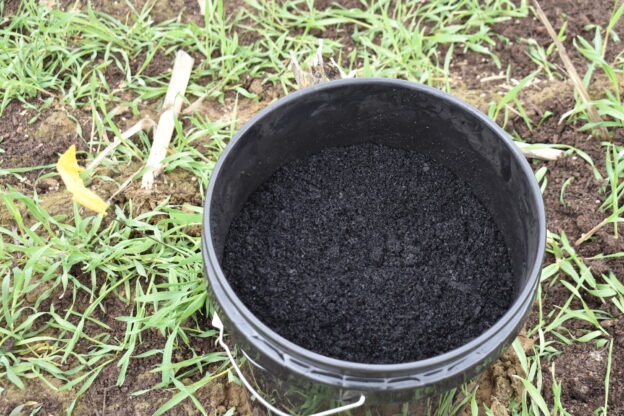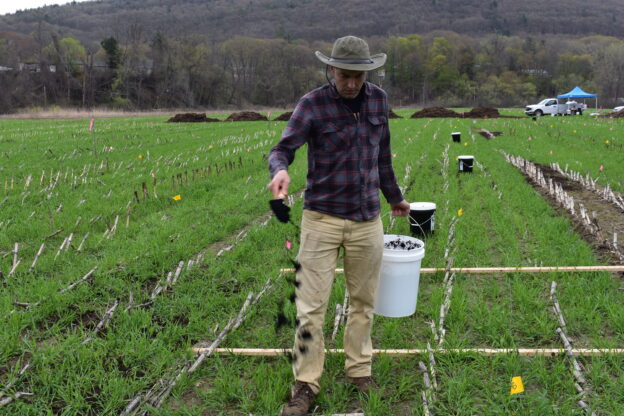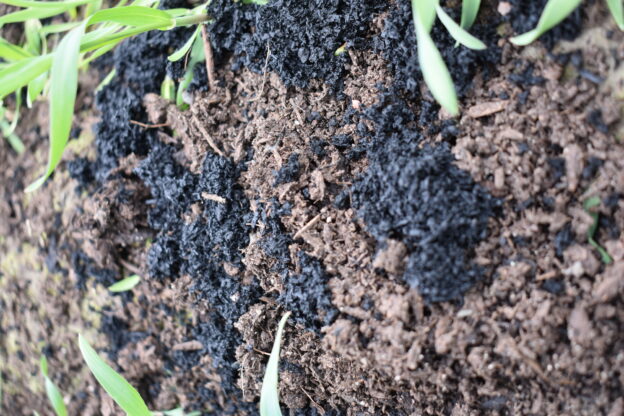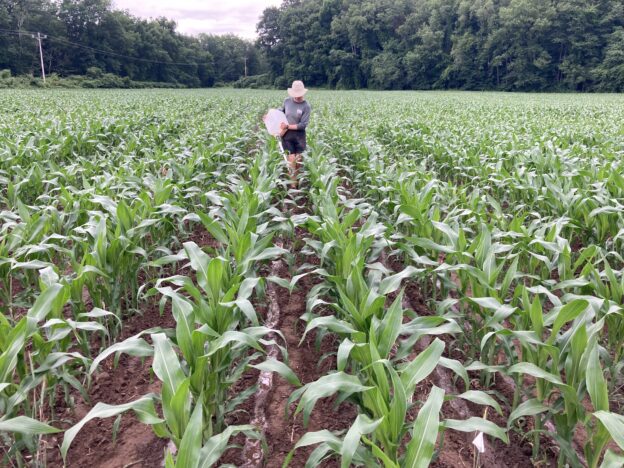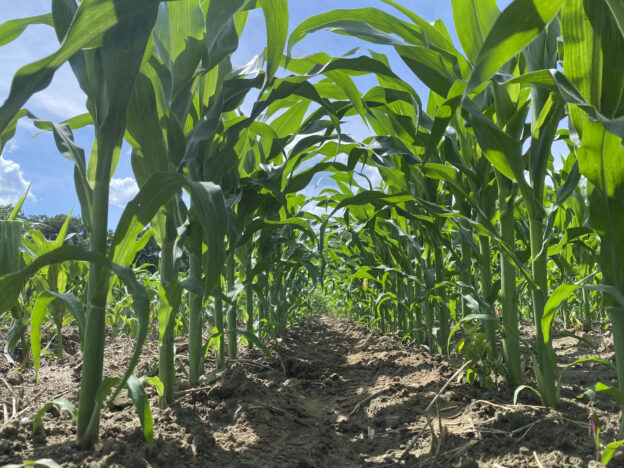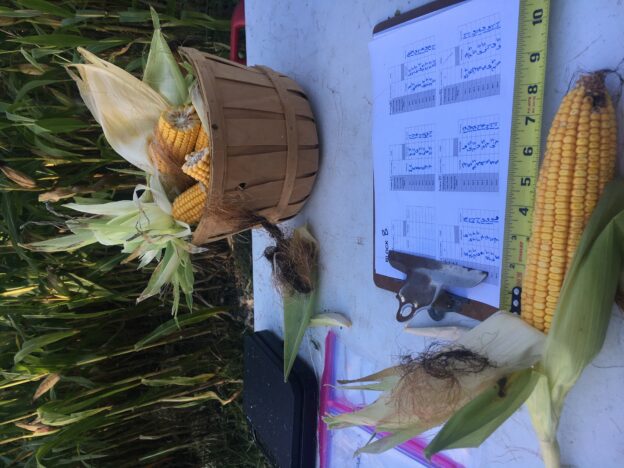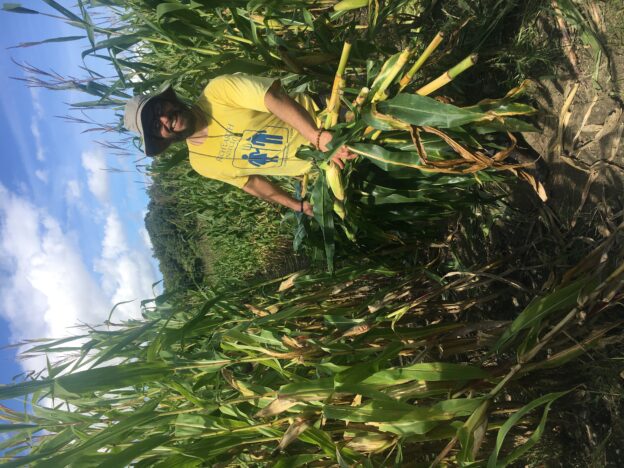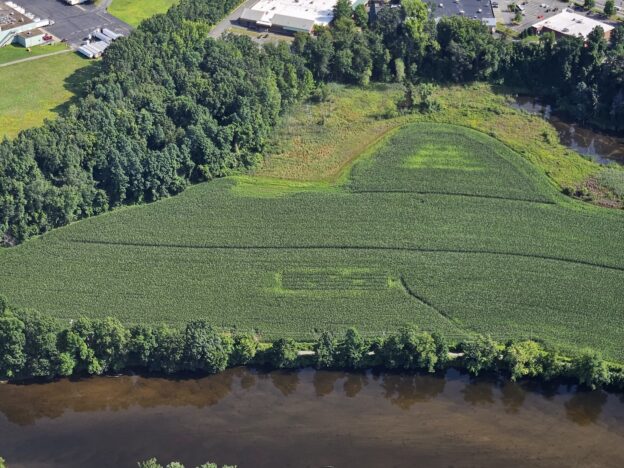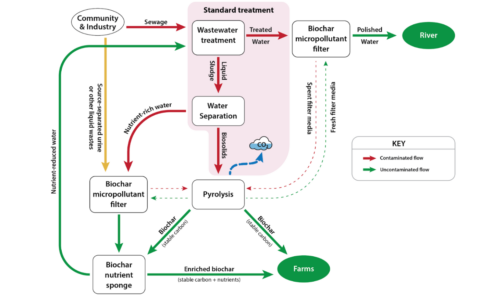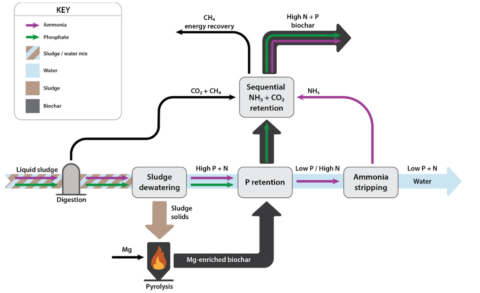Biochar from Biosolids and Source Separated Human Urine: Soil Health Impacts and Farmer Perspectives
Funder: Foundation for Food and Agricultural Research
Collaborators: Cornell University, Cornell Cooperative Extension: Suffolk County, and the University of Michigan
Project Goals
This research project responds to shortcomings in the existing practice of using biosolids for fertilizing farmland. Wastewater biosolids are the solids separated out during the wastewater treatment process, and they are commonly applied to farmland as a soil amendment due to their high nutrient content. In addition to nutrients, however, they contain micropollutants including per- and polyfluoroalkyl substances (PFAS), also known as forever chemicals, from industrial processes, personal care products and many other sources. When biosolids are applied on farmland, these chemicals can contaminate agricultural soils. As an alternative, biosolids are increasingly sent to landfills, where they produce GHG emissions, or incinerated.
This project evaluates the potential to address concerns relating to biosolids micropollutant contamination through the use of biochar. Biosolids can be transformed into biochar—a charcoal-like material created from organic matter—through a process known as pyrolysis. The high temperature and pressure of the pyrolysis process may destroy organic contaminants such as PFAS in biosolids, reducing the contamination risk in the resulting biochar. When used as a soil amendment, biochar has been shown to increase soil water retention, nutrient retention, sequester carbon, and soil structure. Furthermore, PFAS may adsorb onto the surface of biochar particles, especially if the biochar has been chemically activated, and this research is investigating the potential use of biochar as a filtration media to reduce PFAS loads in contaminated waste streams.
This research seeks to evaluate the effects of biosolids biochar production and application on:
- Agricultural productivity
- Soil health
- Wastewater contaminant filtration
- Social acceptance and community trust
Methods
Balancing Contaminant Removal & Nutrient Retention in Biosolids Biochar
We are studying a variety of techniques to optimize the wastewater biochar production process to both reduce the amount of micropollutants in the biochar and retainin nutrients. For example, hotter pyrolysis conditions may lead to greater contaminant removal yet also to greater nutrient loss in the biochar. This research seeks to determine which pyrolysis conditions best address both needs.
Using Biosolids Biochar as a Filter for Other Waste Streams
We are evaluating biochar’s ability to filter contaminants out of nutrient-rich liquid waste streams. To do this, we are comparing the effectiveness of biosolids biochar vs. other filter material for removing PFAS and other microcontaminants from urine and other wastewater streams such as effluent from wastewater treatment plants. We are also developing and assessing methods for activating biochar to improve filtration performance, and re-pyrolyzing spent biochar media to destroy the captured contaminants and prepare the biochar for reuse.
Enriching Biochar with Waste Stream Nutrients
Biochar can adsorb (soak up) nutrients as well as contaminants. Once waste streams are filtered, their nutrients can be adsorbed into biosolids biochar–creating a nutrient-rich soil amendment. Our research is exploring which enrichment methods, pyrolysis conditions, and order of nutrient recovery are best for creating nutrient-enriched biochar for agricultural application.
We are testing the agricultural efficacy of biosolids biochar and source-separated urine through 5-year field trials on silage corn grown in Brattleboro VT, and Riverhead, NY. These trials examine how combinations of soil amendments recovered from various waste streams, including biosolids biochar, affect soil health, the soil microbiome, crop yield, and carbon sequestration, compared to currently-used conventional and organic amendments. These trials build on field studies and social research conducted through a related project funded through SARE’s Research for Novel Approaches in Sustainable Agriculture program.
Social Research
The social research for this study aims to document the concerns and perspectives of key stakeholders, and to co-create strategies for implementation of circular nutrient management systems encompassing themes of processing and treatment; land applications; and regulatory pathways to implementation. Through interviews, dialogue groups and engagement activities we will create a comprehensive map of stakeholder perspectives, identify socio-political impediments to implementation, and seek opportunities to address these issues. Key participants will include industry leaders, environmental advocates, wastewater treatment operators, regulators, planners, legislators, civic leaders, residents living near processing and treatment sites, farmers and consumers. This builds on our social research with farmers conducted through our SARE Novel Approaches project. We seek to develop strategies that address these diverse perspectives through education, policy and technical development.
Scenes from the Field
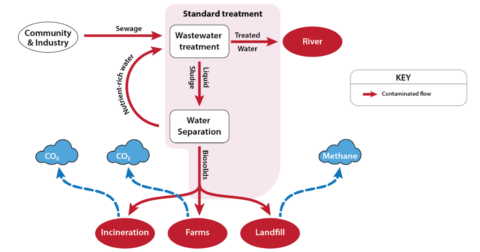
Schematic showing typical flows of microcontaminants in conventional wastewater treatment management.

